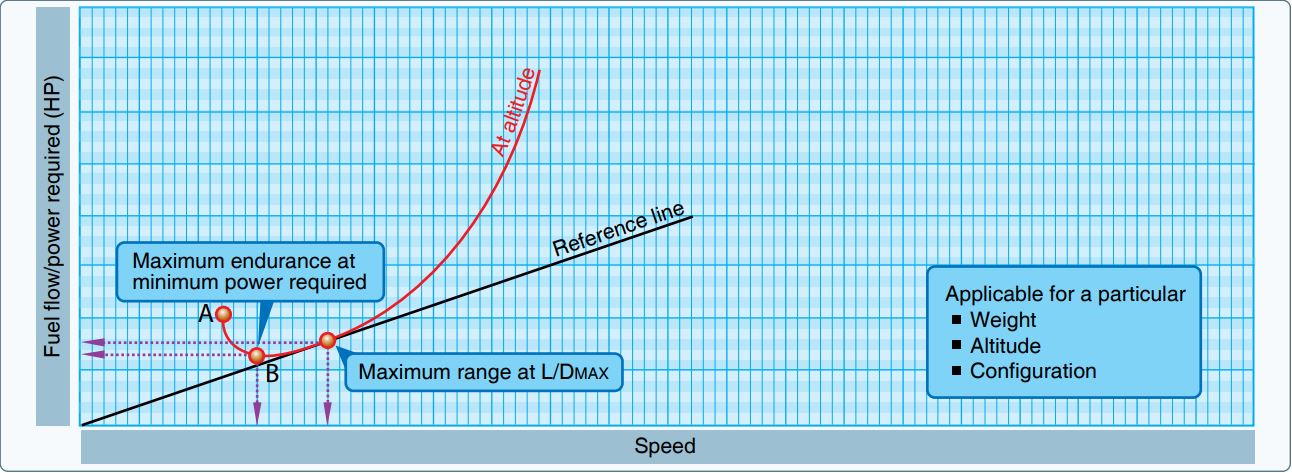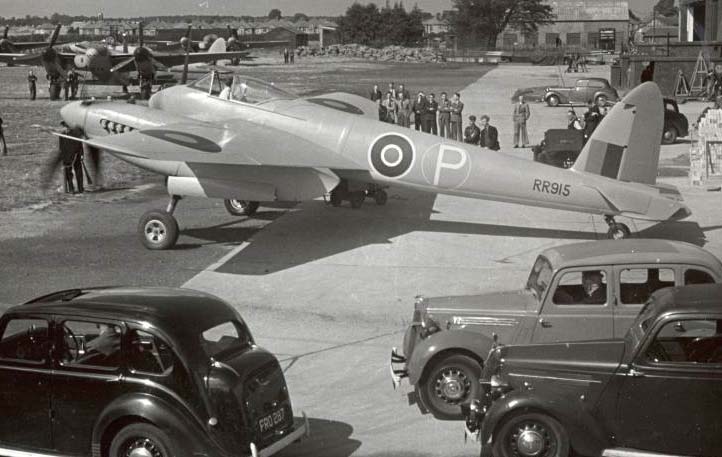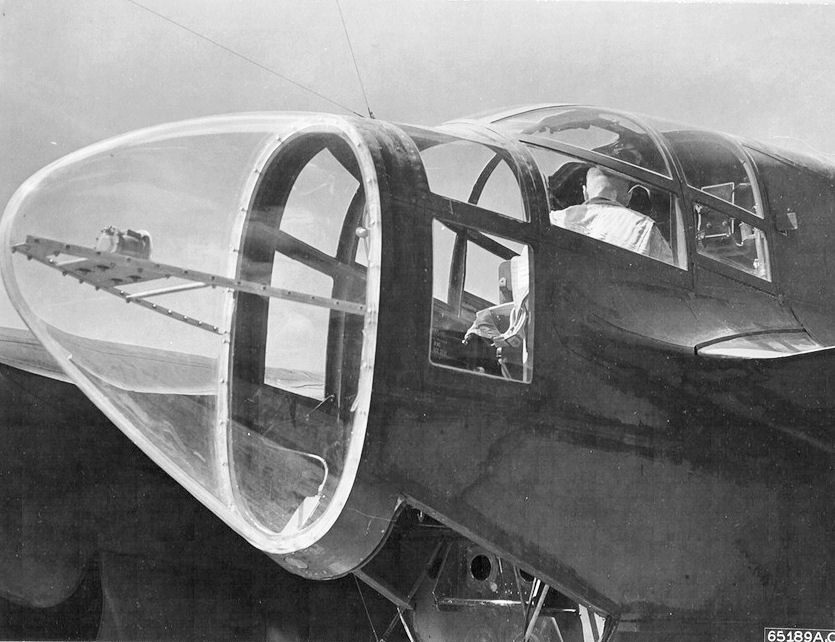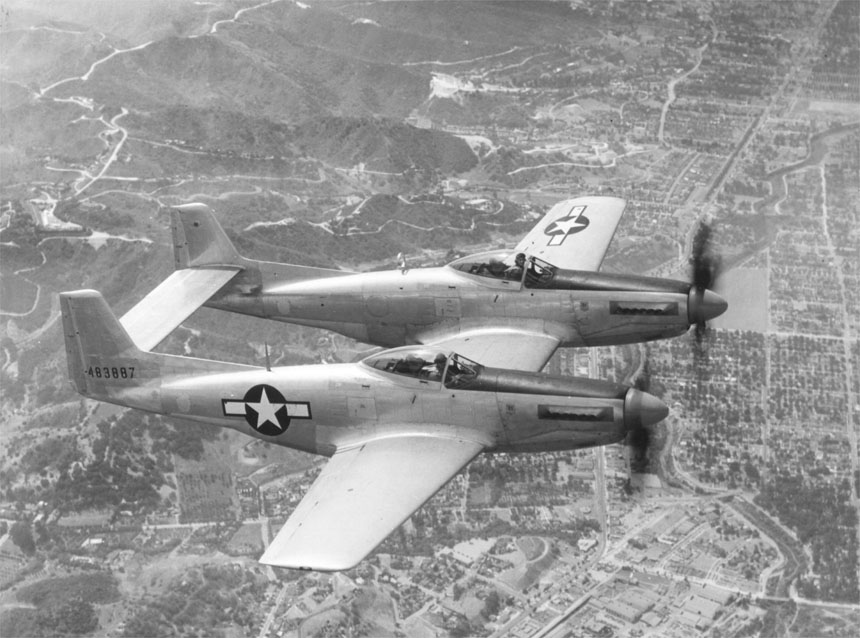|
Mitsubishi Ki-83
The Mitsubishi Ki-83 (キ83) was a Japanese experimental long range heavy fighter designed near the end of World War II. It did not reach production status. Design and development The Mitsubishi Ki-83 was designed as a long range heavy fighter. It was designed and built by a team led by Tomio Kubo, designer of the highly successful Mitsubishi Ki-46. The design was a response to a 1943 specification for a new heavy fighter with great range. The first of four prototypes flew on 18 November 1944. The machines displayed remarkable maneuverability for aircraft of their size, being able to execute a 671 m (2,200 ft) diameter loop in just 31 seconds at a speed of over 644 km/h (400 mph). The Ki-83 carried a powerful armament of two 30 mm (1.18 in) and two 20 mm cannon in its nose. Despite the bomb-ravaged Japanese manufacturing sector, plans for the Ki-83 to enter production were underway when Japan surrendered on 15 August 1945. Both the existence ... [...More Info...] [...Related Items...] OR: [Wikipedia] [Google] [Baidu] |
Range (aeronautics)
The maximal total range is the maximum distance an aircraft can fly between takeoff and landing. Powered aircraft range is limited by the aviation fuel energy storage capacity (chemical or electrical) considering both weight and volume limits. Unpowered aircraft range depends on factors such as cross-country speed and environmental conditions. The range can be seen as the cross-country ground speed multiplied by the maximum time in the air. The fuel time limit for powered aircraft is fixed by the available fuel (considering reserve fuel requirements) and rate of consumption. Some aircraft can gain energy while airborne through the environment (e.g. collecting solar energy or through rising air currents from mechanical or thermal lifting) or from in-flight refueling. These aircraft could theoretically have an infinite range. Ferry range means the maximum range that an aircraft engaged in ferry flying can achieve. This usually means maximum fuel load, optionally with extra fu ... [...More Info...] [...Related Items...] OR: [Wikipedia] [Google] [Baidu] |
De Havilland Hornet
The de Havilland DH.103 Hornet, developed by de Havilland, was a fighter aircraft driven by two piston engines. It further exploited the wooden construction techniques that had been pioneered by the de Havilland Mosquito. Development of the Hornet had started during the Second World War as a private venture. The aircraft was to conduct long range fighter operations in the Pacific Theatre against the Empire of Japan but the war ended before the Hornet reached operational squadron status. The Hornet entered service with RAF Fighter Command where it equipped several day fighter units and was commonly stationed in the British mainland. It saw combat in the Far East, being used as a strike fighter as part of the British military action taken during the Malayan Emergency. A naval carrier-capable version, the Sea Hornet, had been envisaged early on and was procured by the Fleet Air Arm of the Royal Navy. Development Origins In the autumn of 1941, de Havilland found that it had the ... [...More Info...] [...Related Items...] OR: [Wikipedia] [Google] [Baidu] |
Northrop F-15 Reporter
The Northrop F-15 Reporter (later RF-61) was an American unarmed photographic reconnaissance aircraft. Based on the Northrop P-61 Black Widow night fighter, it was the last piston-powered photo-reconnaissance aircraft designed and produced for the United States Air Force. Though produced in limited quantities, and with a relatively short service life, the F-15's aerial photographs of the Korean Peninsula would prove vital in 1950, when North Korea invaded the south.Thompson 1999, pp. 84–85: Note: "Their photos of Korea were invaluable to the UN forces during the first few weeks of that war. It was not until the Marine photo version F7F-3P Tigercat made its sweeps over Inchon that any additional pictures were taken." Design and development The F-15 Reporter was created when the guns were removed from the experimental XP-61E, the last fighter variant of the P-61 Black Widow. With less than six months flying time, the first XP-61E was taken back to the Northrop modification s ... [...More Info...] [...Related Items...] OR: [Wikipedia] [Google] [Baidu] |
Northrop P-61 Black Widow
The Northrop P-61 Black Widow is a twin-engine United States Army Air Forces fighter aircraft of World War II. It was the first operational U.S. warplane designed as a night fighter, and the first aircraft designed specifically as a night fighter. Named for the North American spider ''Latrodectus mactans'', it was an all-metal, twin-engine, twin-boom design armed with four forward-firing 20 mm (.79 in) Hispano M2 autocannon in the lower fuselage, and four M2 Browning machine guns in a dorsal gun turret. Developed during the war, the first test flight was made on May 26, 1942, with the first production aircraft rolling off the assembly line in October 1943. Although not produced in the large numbers of its contemporaries, the Black Widow was operated effectively as a night fighter by United States Army Air Forces squadrons in the European Theater, Pacific Theater, China Burma India Theater, and Mediterranean Theater during World War II. It replaced earlier Briti ... [...More Info...] [...Related Items...] OR: [Wikipedia] [Google] [Baidu] |
North American F-82 Twin Mustang
The North American F-82 Twin Mustang is the last American piston-engined fighter ordered into production by the United States Air Force. Based on the North American P-51 Mustang, the F-82 was originally designed as a long-range escort fighter for the Boeing B-29 Superfortress in World War II. The war ended well before the first production units were operational. In the postwar era, Strategic Air Command used the aircraft as a long-range escort fighter. Radar-equipped F-82s were used extensively by the Air Defense Command as replacements for the Northrop P-61 Black Widow as all-weather day/night interceptors. During the Korean War, Japan-based F-82s were among the first USAF aircraft to operate over Korea. The first three North Korean aircraft destroyed by U.S. forces were shot down by F-82s, the first being a North-Korean Yak-11 downed over Gimpo Airfield by the USAF 68th Fighter Squadron. Design and development Initially intended as a very long-range (VLR) escort fighter, ... [...More Info...] [...Related Items...] OR: [Wikipedia] [Google] [Baidu] |
Nakajima J5N
The Nakajima J5N was an abandoned Japanese prototype fighter aircraft of the World War II era. J5N was developed as twin-engine interceptor for countering attacks by Boeing B-29 Superfortress. Design and development During the spring of 1943, the JNAF issued an 18-Shi specification for a single-seat twin-engine interceptor capable of reaching a top speed of 666 km/h (414 mph) at 6,000 m (19,690 ft). Nakajima submitted a proposal based on the earlier J1N1 ''Gekko'' three-seat night fighter, although this new aircraft – designated J5N1 – was slightly smaller. The layout of the J5N was similar to the J1N: a low set wing on which were mounted the two powerplants, 1,484 kW (1,990 hp) Nakajima Homare 21 18-cylinder air-cooled radial engines, with a long fuselage ending in a conventional tail arrangement. For maximum utilization of the power from the twin engines, large four-blade propellers were fitted which also featured large spinners (as fitt ... [...More Info...] [...Related Items...] OR: [Wikipedia] [Google] [Baidu] |
Messerschmitt Me 410
The Messerschmitt Me 410 ''Hornisse'' (Hornet) is a German heavy fighter and ''Schnellbomber'' used by the ''Luftwaffe'' during World War II. Though an incremental improvement of the Me 210, it had a new wing plan, longer fuselage and engines of greater power. The changes were significant enough for the aircraft to be renamed the Me 410. Design and development Development of the Me 210 had been underway since 1939 but the aircraft proved unstable and was never considered for full-scale production. Modifications to the layout produced the Me 210C and 210D, which proved somewhat superior. As studies progressed on the Me 210D, and with a separate parallel attempt to improve upon the 210 with the Messerschmitt Me 310 in the second half of 1943—which provided almost no aerodynamic improvement over the 210's risky handling qualities—it was instead decided to introduce a new model, the Me 410. The major change between the Me 210 and 410 was the introduction of the larg ... [...More Info...] [...Related Items...] OR: [Wikipedia] [Google] [Baidu] |
Savoia-Marchetti SM
SIAI-Marchetti was an Italian aircraft manufacturer primarily active during the interwar period. History The original company was founded during 1915 as SIAI (''Società Idrovolanti Alta Italia'' - Seaplane Company of Upper Italy). As suggested by its name, the firm initially specialised in the manufacture of seaplanes, the vast majority of which were intended for the Italian armed forces. Perhaps its most prominent early aircraft was the SIAI S.16, a seaplane that had been configured to perform both aerial reconnaissance and bomber roles, but also proved itself quite capable of long-distance flights. During 1925, Italian aviator Francesco de Pinedo of the '' Regia Aeronautica'' (Italian Royal Air Force) used an SIAI S.16''ter'' he named ''Genariello'' for a record-setting flight from Rome to Australia and Tokyo to demonstrate his idea that seaplanes were superior to landplanes for long-distance flights. Having departed Rome on 21 April, Pinedo and his mechanic, Ernesto Camp ... [...More Info...] [...Related Items...] OR: [Wikipedia] [Google] [Baidu] |
McDonnell XP-67
The McDonnell XP-67 "Bat" or "Moonbat"It is unclear if either name was an official USAAF designation; both are used in various sources. It is possible that both are informal nicknames that refer to the aircraft's unique appearance. was a prototype for a twin-engine, long-range, single-seat interceptor aircraft for the United States Army Air Forces. Although the design was conceptually advanced, it was beset by numerous problems and never approached its anticipated level of performance. The project was cancelled after the sole completed prototype was destroyed by an engine fire. Design and development Origins In 1940, the U.S. Army Air Corps issued Request for Proposal R-40C, requesting designs for a high-speed, long-range, high-altitude interceptor intended to destroy enemy bombers. The specifications were very bold, encouraging manufacturers to produce radical aircraft that would outperform any existing fighter in the world at the time. The aerospace parts manufacturer McDonn ... [...More Info...] [...Related Items...] OR: [Wikipedia] [Google] [Baidu] |
Lockheed XP-58 Chain Lightning
The Lockheed XP-58 Chain Lightning was an American long-range fighter developed during World War II. Although derived from the successful P-38 Lightning, the XP-58 was plagued by technical problems with its engines that eventually led to the project's cancellation. Design and development The XP-58 was a Lockheed Aircraft Company funded initiative to develop an improved Lightning as a long-range fighter following the release by the U.S. Army Air Corps of the Lightning for sale to Britain on 20 April 1940. Initially, two designs were formulated, both using the Continental IV-1430 engines. One would be a single-seat aircraft with one 20 mm (.79 in) cannon and four .50 in (12.7 mm) machine guns. The second would be a two-seat aircraft with the addition of a flexible .50 in (12.7 mm) gun at the end of each tail boom.Francillon 1982, p. 252. In July 1940, Lockheed decided to switch to Pratt & Whitney XH-2600 engines as the aircraft would be underpowered ... [...More Info...] [...Related Items...] OR: [Wikipedia] [Google] [Baidu] |
Kawasaki Ki-96
The Kawasaki Ki-96 was a Japanese single seat, twin-engine heavy fighter of World War II. It was intended to replace the Kawasaki Ki-45s of the Imperial Japanese Army Air Service. However, it was not adopted and only three prototypes were built. Design and development The success of the Kawasaki Ki-45 led Kawasaki to start development of an evolved version, on Kawasaki's own authority, in August 1942. Like the Ki-45, the proposed design was a two-seat, twin-engine fighter, but larger and using more powerful engines. In December 1942 the ''Koku Hombu'' ( Imperial Japanese Army Aviation Bureau) showed interest, but asked Kawasaki to complete the aircraft as single-seat fighters. The first prototype, which was converted while being produced and which retained the larger cockpit canopy Canopy may refer to: Plants * Canopy (biology), aboveground portion of plant community or crop (including forests) * Canopy (grape), aboveground portion of grapes Religion and ceremonies * Balda ... [...More Info...] [...Related Items...] OR: [Wikipedia] [Google] [Baidu] |
Junkers Ju 388
The Junkers Ju 388 '' Störtebeker'' is a World War II German ''Luftwaffe'' multi-role aircraft based on the Ju 88 airframe by way of the Ju 188. It differed from its predecessors in being intended for high altitude operation, with design features such as a pressurized cockpit for its crew. The Ju 388 was introduced very late in the war, and production problems along with the deteriorating war conditions meant that few were built. Background The ''Reichsluftfahrtministerium'' (RLM), the Reich Aviation Ministry, first learned of the American Boeing B-29 Superfortress heavy bomber in late 1942. Serious concerns as to B-29 capability developed in early 1944, when YB-29 "Hobo Queen" made a well-publicised appearance at RAF Bovingdon, which had been cryptically hinted-at in an American-published ''Sternenbanner'' German language propaganda leaflet from Leap Year Day in 1944, meant to be circulated within the Reich. The performance estimates of this aircraft were a cause for great un ... [...More Info...] [...Related Items...] OR: [Wikipedia] [Google] [Baidu] |



.jpg)




